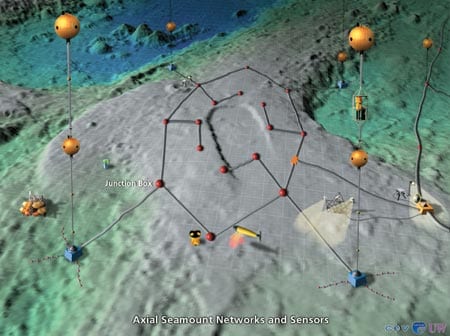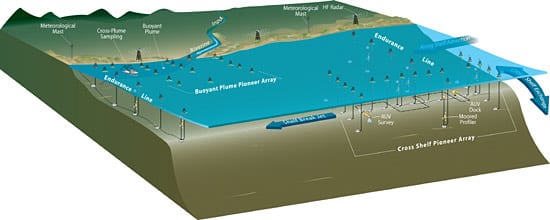About Ocean Observatories
What are ocean observatories?
Ocean observatories are platforms for studying the ocean and its fundamental processes in real time, while returning continuous streams of data and imagery back to shore-based researchers. They include suites of instruments and sensors, power supplies, computer command and storage capability, and Internet connections or other advanced communications systems.
Who builds and operates observatories?
A few ocean observatories and observing systems are already in operation or under construction, while several larger ones are now being planned by universities and research institutions in conjunction with NSF's Ocean Observatories Initiative (OOI), the NOAA-led Integrated and sustained Ocean Observation System (IOOS), and other international programs.
» Learn more
Why do we need ocean observatories and observing systems?
To truly comprehend the ocean’s dynamic behavior and to monitor how it affects us back on shore, scientists must do more than observe small regions for short periods. They need to establish a presence in the ocean—platforms from which to view how the ocean and seafloor change with seasons, years, and decades. They need outposts from which to spy the first tremors of an earthquake, the first roll of a tsunami wave, the first bloom of toxic algae.
» Learn more
What kinds of observatories are being proposed and developed?
Ocean observatories generally fall into three categories:
Where can I read more about ocean observatories?
Visit our clearinghouse of links to popular science articles, National Research Council studies, press releases, National Science Foundation reports, and other documents.


